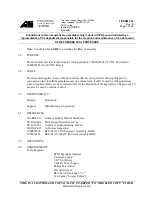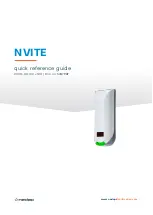
6
5.52.127.01.01.02
2.5
Basic safety measures
Observe installation-, operation and maintenance instruction.
Take notice of caution notes at units and in the manual
Observe
safety
distances.
Take care for a free view on the load.
Only use the hoists appropriately.
The equipment is to be used exclusively for movement of goods. Under no circumstances my persons be
moved.
Never load the devices beyond their working load limit.
Pay attention to the accident prevention regulations (UVV).
Should the hoist be used outside of Germany, please pay attention to the national regulations that apply.
Supporting structures and load-attached devices used in conjunction with this equipment must provide an
adequate safety factor to handle the rated load plus the weight of the equipment. In case of doubt, consult
a structural engineer.
If the equipment has not been used for a period of time, carry out visual checks of all main components
such as chains, load hooks etc. and replace any damaged parts with new, original spare parts before
putting the equipment back into operation!
Do not use a hoist that is defective, pay attention to any abnormal noise it makes during operation.
Stop working immediately in case of disturbances and remedy failures.
Any damage and faults must be reported to a responsible supervisor immediately.
If the unit is put into motion, any persons in the immediate vicinity must be informed by calling to them!
Please pay attention to the regulations for load carrying devices UVV for both positive and non-positive
methods of attaching loads.
The lifting tackle or the load must be securely attached to the hook and be seated at the bottom of the
hook.
The safety catch of hooks must be closed.
When charged, the housing may not be in contact somewhere.
Stop lowering the load when the bottom block or the load is being set down or is prevented from being
lowered further.
The load chain must not be twisted.
Twisted chains must be aligned before attaching the load.
The correct alignment of the chain links can be seen from the weld seams.
The chain links must always be aligned in one direction.
Illustration 1
Motor drive is prohibited.
The devices are not suitable for continuous operation. In order to avoid too high temperatures of the
brake discs that are not permitted, the following maximum continuous operating times must not be
exceeded:
Light use (highest load is seldom lifted)
Medium use (roughly equal frequency of light, medium and heavy loads)
Heavy use (nearly always largest permissible load)
=
=
=
60 min
30 min
15 min
Let the hoist stand still at least 15 minutes afterwards to cool down the brake.
WARNING!
The following is not allowed:
to lift another load than the nominal safe working load
to manipulate the sliding clutch if units are equipped with
The use of elongated or damaged chains or wire ropes. Replace them immediately by new, original parts.
Never loop the load chain around a load nor place or pull the chain over edges.
Never repair damaged load hooks (e.g. by hammering), but replace them by original hooks.
DANGER!
Special safety measures for use in areas prone to explosion.







































